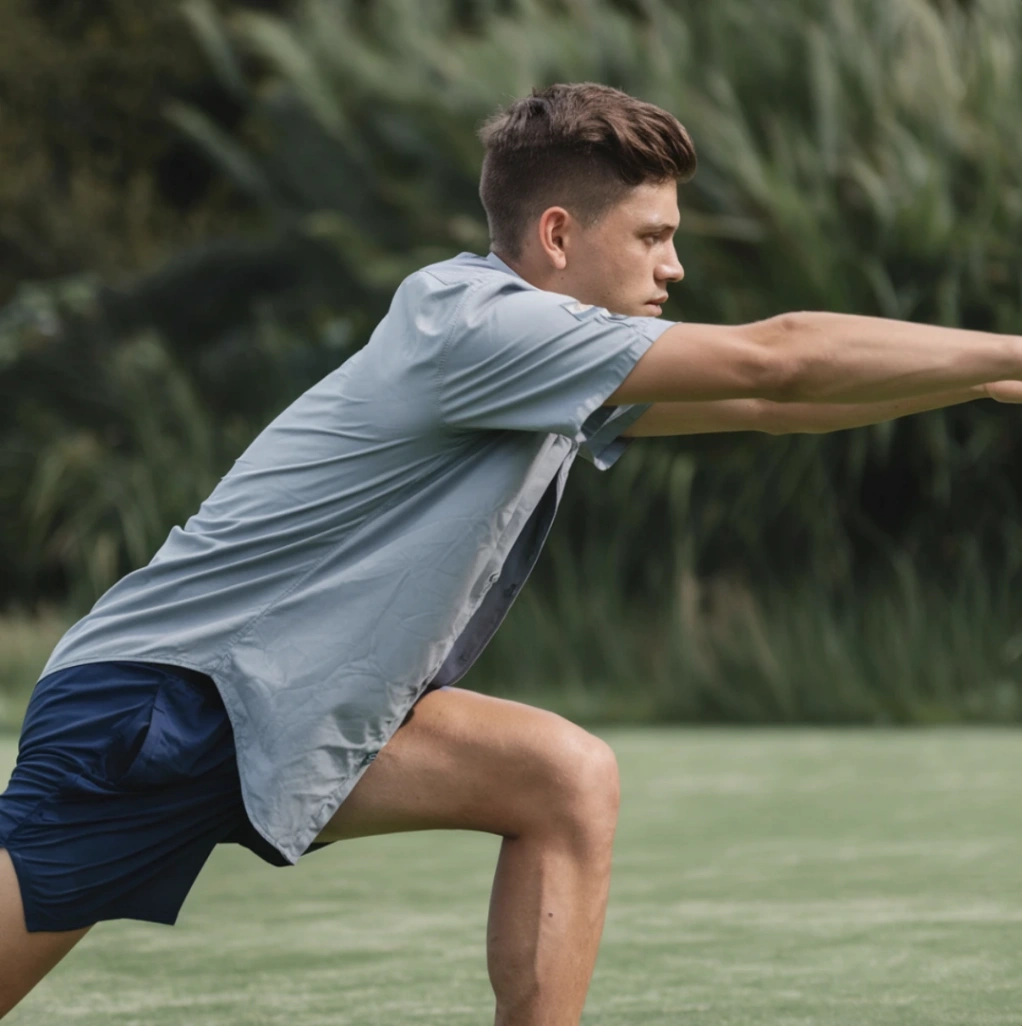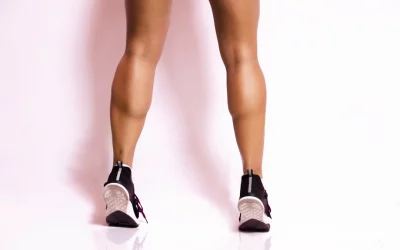The psoas muscle might sound like something out of a medical textbook, but this little muscle is a big player in keeping you upright and moving. Anchored deep in the hips, it’s key to stabilizing your spine and powering basic moves like walking and bending. But when it gets tight—thanks to long sitting hours or skipped stretches—it can lead to pesky lower back pain and throw off your posture.
But fear not! There are some simple stretches designed to ease that tension and bring your psoas back to its happy, supportive self.
In this article, we’ll cover some of the best psoas stretches to relieve back pain, improve flexibility, and have you moving with ease again. Ready to show this overlooked muscle some love?
The Link Between Psoas Tightness and Back Pain
The psoas muscle, located deep within the abdomen, connects your lower spine to your thighs. This crucial muscle is part of the hip flexor group, responsible for lifting your legs, bending at the waist, and stabilizing the spine during movement. Its main job? To keep you upright and mobile.
When the psoas muscle tightens up, it can pull on the lower spine, tilting the pelvis and creating a “domino effect” that impacts your posture and strains your lower back. This tension can lead to discomfort or even chronic pain, especially if left unaddressed.
What causes psoas tightness? A few common culprits include prolonged sitting (think hours at a desk), stress (which can cause your muscles to tense up), and physical inactivity. When the psoas stays in a shortened position for extended periods, it can become stiff, setting the stage for back pain and reduced mobility.
Understanding how the psoas affects your back health is the first step in managing discomfort—let’s keep it from holding you back with some effective stretches!
Essential Psoas Stretches for Back Pain Relief
 Standing Psoas Stretch
Standing Psoas Stretch
The Standing Psoas Stretch is a fundamental move for lengthening the psoas muscle, which can help improve posture and ease lower back tension. By incorporating this stretch, you can target the hip flexors directly, enhancing flexibility and reducing discomfort.
This stretch is especially beneficial as it helps:
-
Lengthen the psoas muscle, alleviating tightness.
-
Improve posture by releasing tension in the hip flexors.
-
Support lower back health, reducing strain in daily activities.
To perform the Standing Psoas Stretch, follow these steps:
-
Stand with your feet hip-width apart.
-
Step back with your right foot, keeping your left knee directly over your left ankle.
-
Lower your right knee to the ground and gently shift your weight forward, feeling the stretch along the front of your right hip.
-
Hold for up to 30 seconds, then switch sides.
Kneeling Lunge Stretch
The Kneeling Lunge Stretch provides a deep release for the psoas muscle, ideal for relieving lower back discomfort. This stretch is perfect for those who spend prolonged periods sitting, as it targets both the hip and psoas areas.
This stretch is particularly beneficial as it helps:
-
Release deep tension in the psoas and hip flexors.
-
Enhance hip flexibility, supporting better movement.
-
Alleviate lower back discomfort associated with tight hips.
To perform the Kneeling Lunge Stretch, follow these steps:
-
Begin in a kneeling position with your right knee on the ground and your left foot forward, forming a 90-degree angle.
-
Engage your core and gently press your hips forward while keeping your torso upright.
-
Feel the stretch in the front of your right hip and thigh.
-
Hold for up to 30 seconds, then switch to the other side.
Supine Psoas Stretch (With a Strap)
The Supine Psoas Stretch is a gentle yet effective way to target the psoas using a strap or towel for support. This stretch is excellent for individuals with limited flexibility, providing a controlled release for the hip flexors without strain.
This stretch is especially beneficial as it helps:
-
Gently lengthen the psoas muscle.
-
Improve hip flexibility without putting pressure on the lower back.
-
Ease tension in the hips and lower spine.
To perform the Supine Psoas Stretch, follow these steps:
-
Lie on your back with one knee bent and the other leg extended on the floor.
-
Loop a strap or towel around the arch of your raised foot.
-
Gently pull your leg toward you, keeping it straight and breathing deeply.
-
Hold for up to 30 seconds, then switch legs.
Reclining Butterfly Pose
The Reclining Butterfly Pose stretches the psoas and inner thigh muscles, offering a gentle release that’s perfect for relieving lower back pain. This stretch encourages a calm, relaxed hip position, making it a great addition to any recovery routine.
This stretch is particularly beneficial as it helps:
-
Improve flexibility in the psoas and inner thighs.
-
Alleviate lower back tension by gently opening the hips.
-
Promote relaxation in the hip area.
To perform the Reclining Butterfly Pose, follow these steps:
-
Lie on your back with your knees bent and the soles of your feet together, allowing your knees to fall open.
-
Place your hands on your hips or by your sides, relaxing your upper body.
-
Hold for up to 30 seconds, breathing deeply and allowing your hips to open.
Incorporating these essential psoas stretches into your routine can help reduce back pain and improve mobility over time. For a more personalized approach, explore customized routines with WeStretch.
How to Make Psoas Stretching Part of Your Daily Routine
Making psoas stretches a regular part of your day doesn’t have to be complicated—a few minutes in the morning and evening can make a noticeable difference in back comfort. Here’s how to ease these stretches into your routine:
-
Morning Routine: Start your day with a gentle stretch like the Standing Psoas Stretch to wake up your hips and improve posture for the day ahead. This sets a solid foundation to prevent tightness from building up.
-
Evening Wind-Down: Before bed, try a relaxing Reclining Butterfly Pose to release any tension accumulated during the day. Combining this with deep breathing helps calm the nervous system and prepares your body for restful sleep.
Consistency is key; making stretching a daily habit can lead to reduced back pain and improved mobility over time.
“Give it a few weeks of daily stretching, and you might just be surprised by how much lighter and more comfortable you feel. A few minutes a day really can make all the difference.”
To help you stay consistent and get the most out of each session, WeStretch Pro offers advanced customization, unlimited workouts, and specialized routines, all guided by virtual coaches Ada and Bruce. Making stretching a daily habit with their support can lead to reduced back pain, improved mobility, and lasting comfort over time.
Exercise Smarter with WeStretch: Your All-in-One Stretching Assistant
A consistent full-body stretching routine is essential for improving flexibility, supporting injury prevention, and enhancing overall well-being. Carefully following simple yet effective stretches targeting the hamstrings, hip flexors, back, quads, chest, and shoulders, individuals of any fitness level can reap the benefits.
Regular stretching, with attention to proper form and consistency, can help you move more freely, recover faster, and feel better in everyday activities.
Looking for a way to add some fun to your stretching routine? Check out WeStretch—an app that’s like your own personal stretch coach! With tailored plans, easy-to-follow demos, and progress tracking, it’s got everything you need to keep you limber and on point. Ready to get flexible? Sign up today and let’s get stretching!
 FAQ
FAQ
What is the psoas muscle, and why does it cause back pain?
The psoas muscle is a deep hip muscle that connects the lower spine to the thigh. Its primary functions include stabilizing the spine and supporting leg movement. When tight or shortened—often from prolonged sitting or lack of stretching—the psoas can strain the lower back, leading to discomfort or chronic pain.
How often should I do psoas stretches to relieve back pain?
For best results, aim to stretch your psoas daily. Consistency is key, so incorporating these stretches into a morning or evening routine can help. Start with gentle stretches and gradually increase duration, holding each stretch for 20–30 seconds. Over time, regular stretching can reduce back pain and improve flexibility.
Can psoas stretching help improve posture?
Yes, psoas stretching can significantly improve posture. A tight psoas can tilt the pelvis and pull on the lower spine, leading to a slouched or misaligned posture. By releasing tension in the psoas, stretching helps correct pelvic alignment, supporting a healthier, more upright posture and reducing strain on the back.
Are there any precautions I should take when doing psoas stretches?
If you have lower back pain or limited flexibility, start with gentle psoas stretches and avoid overextending. Listen to your body—if a stretch feels uncomfortable, ease off. Using a strap for support in certain stretches can help beginners. Always consult a healthcare professional before starting if you have a history of back issues.
How long does it take to see results from psoas stretching?
Many people experience relief after a few days of consistent stretching, but noticeable improvements in flexibility and reduced pain can take a few weeks. Patience and consistency are crucial—regularly stretching the psoas over time helps prevent tightness from recurring, promoting lasting back comfort and improved mobility.






